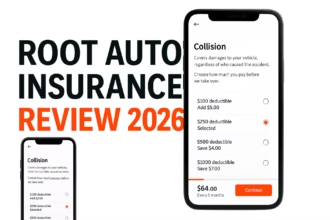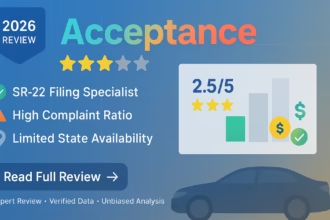
Introduction: Why Index Funds Are Ideal for Beginners
Stepping into the investment world can feel overwhelming, especially for beginners navigating the complex landscape of financial markets. Index funds have emerged as the cornerstone of smart investing strategies, offering a straightforward path to building wealth without requiring extensive market knowledge. As we move through 2025, index funds continue to provide one of the most accessible and effective ways for new investors to enter the market with minimal risk and maximum potential for long-term growth.
Index funds are investment vehicles designed to track specific market indices like the S&P 500, Nasdaq Composite, or Russell 2000. Unlike actively managed funds that rely on portfolio managers to select individual securities, index funds passively follow predetermined indexes, mirroring their performance with remarkable accuracy. This approach eliminates the guesswork of stock picking while delivering consistent returns that have historically outperformed many actively managed funds over the long term.
For beginners, index funds offer several compelling advantages: broad diversification across hundreds of companies, significantly lower fees than actively managed alternatives, and a “set it and forget it” approach that aligns perfectly with long-term wealth-building goals. As inflation concerns and market volatility continue to shape the investment landscape in 2025, index funds provide a stable foundation for new investors looking to grow their money while minimizing risk.
In this comprehensive guide, we’ll explore the best index funds for beginner investors in 2025, breaking down everything you need to know to make informed investment decisions. From understanding how index funds work to comparing the top options across various categories, we’ve compiled essential information to help you build a solid investment portfolio tailored to your financial goals and risk tolerance.
Understanding Index Funds: The Foundation of Smart Investing
What Are Index Funds?
Index funds are investment vehicles that pool money from many investors to purchase a portfolio of securities that mirrors a specific market index. Rather than attempting to beat the market, index funds aim to match the performance of their benchmark index as closely as possible. This passive investment approach offers several key benefits, particularly for beginners:
- Diversification: By investing in an index fund, you instantly gain exposure to hundreds or even thousands of companies across various sectors and industries, reducing the risk associated with individual stock selection.
- Lower Costs: Since index funds don’t require teams of analysts researching individual stocks or frequent trading, they typically charge much lower expense ratios than actively managed funds. These savings compound significantly over time.
- Transparency: Index funds follow clear, rules-based approaches, making it easy to understand exactly what you’re investing in at all times.
- Tax Efficiency: With lower turnover rates than actively managed funds, index funds generally generate fewer taxable events, helping investors keep more of their returns.
Types of Index Funds Available to Investors
Index funds come in various types, each tracking different segments of the market. Understanding these categories helps beginners select the right funds for their investment objectives:
Broad Market Index Funds
These funds aim to capture the performance of entire markets, providing maximum diversification across sectors and company sizes. Examples include:
- Total Stock Market Funds: Track the entire U.S. equity market, from large corporations to small businesses
- S&P 500 Funds: Follow the 500 largest publicly traded companies in the United States
- Global or International Funds: Provide exposure to companies worldwide
Market Cap Index Funds
These funds focus on companies based on their market capitalization (the total value of a company’s outstanding shares):
- Large-Cap Funds: Track companies valued at $10 billion or more, known for stability and often dividend payments
- Mid-Cap Funds: Follow companies valued between $2 billion and $10 billion, offering a balance of growth and stability
- Small-Cap Funds: Invest in smaller companies (under $2 billion) with potentially higher growth prospects but greater volatility
Sector-Based Index Funds
These funds concentrate on specific industries or sectors:
- Technology Funds: Focus on tech companies, typically offering higher growth potential
- Healthcare Funds: Track companies in the healthcare industry
- Financial Sector Funds: Concentrate on banks, insurance companies, and other financial institutions
- Real Estate Funds: Invest in Real Estate Investment Trusts (REITs) and real estate companies
International Index Funds
These funds provide exposure to markets outside the United States:
- Developed Market Funds: Invest in established economies like Europe, Japan, and Australia
- Emerging Market Funds: Focus on developing economies like China, India, Brazil, and others
- Global Funds: Combine U.S. and international exposure
Bond Index Funds
These funds track fixed-income securities:
- Total Bond Market Funds: Track the broader bond market
- Treasury Bond Funds: Invest in U.S. government bonds
- Corporate Bond Funds: Focus on corporate debt securities
- Municipal Bond Funds: Invest in bonds issued by local governments
Understanding these different types helps beginners build a diversified portfolio aligned with their investment goals and risk tolerance.
Why Index Funds Have Become Popular Among Beginners
The rise in popularity of index funds, especially among beginning investors, isn’t coincidental. Several factors have contributed to their widespread adoption:
Historical Performance
While past performance doesn’t guarantee future results, index funds tracking major market indices have delivered impressive long-term returns. The S&P 500, for instance, has generated an average annual return of approximately 10% over the long term, despite short-term fluctuations and market downturns.
Lower Costs Mean Higher Returns
One of the most compelling advantages of index funds is their cost-effectiveness. The expense ratio—the annual fee charged by the fund company—is typically much lower for index funds compared to actively managed alternatives. This difference might seem small initially, but it compounds significantly over time.
For example, if you invest $10,000 in a fund with a 0.03% expense ratio (common for many S&P 500 index funds), you’ll pay just $3 annually in fees. The same investment in an actively managed fund with a 1% expense ratio would cost $100 per year. Over decades of investing, this difference can amount to tens of thousands of dollars.
Outperformance of Active Management
Studies consistently show that most actively managed funds fail to outperform their benchmark indices over extended periods. According to research from S&P Global, more than 88% of actively managed large-cap funds underperformed the S&P 500 over the 15-year period ending in 2023. This underperformance is largely attributed to higher fees and the difficulty of consistently making successful stock picks.
Simplicity and Accessibility
Index funds offer a straightforward investment approach that doesn’t require complex analysis or constant monitoring. This simplicity makes them particularly attractive to beginners who may feel intimidated by the prospect of selecting individual stocks or timing the market.
How to Get Started with Index Fund Investing
Setting Clear Investment Goals
Before selecting specific index funds, beginners should establish clear investment objectives:
- Time Horizon: Are you investing for retirement decades away, or for a more immediate goal like buying a house in five years?
- Risk Tolerance: How comfortable are you with market fluctuations? Younger investors with longer time horizons can typically tolerate more risk.
- Income Needs: Do you require current income from your investments, or are you focused solely on growth?
Opening an Investment Account
To invest in index funds, you’ll need an appropriate account. Options include:
- Employer-Sponsored Retirement Plans: 401(k)s or 403(b)s often offer index funds as investment options.
- Individual Retirement Accounts (IRAs): Traditional or Roth IRAs provide tax advantages for retirement savings.
- Taxable Brokerage Accounts: Offer flexibility with no contribution limits or withdrawal restrictions.
Choosing the Right Platform
Several platforms offer access to index funds, each with distinct advantages:
Vanguard
- Pros: Pioneer in index investing with extensive fund selection, investor-focused philosophy
- Cons: Higher minimum investments for some funds, less intuitive interface for beginners
- Best for: Long-term investors who appreciate Vanguard’s investor-owned structure
Fidelity
- Pros: Excellent research tools, zero-fee index funds, no account minimums
- Cons: Higher fees for some non-Fidelity funds
- Best for: Investors who want comprehensive research capabilities and zero-fee index fund options
Charles Schwab
- Pros: Low-cost index funds, excellent customer service, comprehensive investment platform
- Cons: Higher minimum investments for some mutual funds
- Best for: Investors seeking an all-in-one investment platform with strong customer support
Robinhood
- Pros: User-friendly interface, commission-free ETF trading, no account minimums
- Cons: Limited research tools, no mutual funds, encourages more active trading
- Best for: Tech-savvy beginners who prefer ETFs over mutual funds
Best Index Funds for Beginner Investors in 2025
After analyzing performance data, expense ratios, and accessibility, we’ve identified the top index funds across different categories that are particularly suitable for beginners in 2025:
Best S&P 500 Index Funds
The S&P 500 tracks approximately 500 of the largest publicly traded companies in the United States, representing about 80% of the American equities market. These funds are often recommended as core holdings for beginners due to their broad diversification and historical performance.
1. Fidelity ZERO Large Cap Index Fund (FNILX)
- Expense Ratio: 0.00% (yes, zero fees)
- Minimum Investment: $0
- 5-Year Annualized Return: 18.8% (as of March 2025)
- Why It’s Great for Beginners: This fund tracks the Fidelity U.S. Large Cap Index, which closely mirrors the S&P 500 but avoids licensing fees, allowing Fidelity to offer it with zero expenses. The absence of fees and investment minimums makes it exceptionally accessible for new investors.
2. Vanguard S&P 500 ETF (VOO)
- Expense Ratio: 0.03%
- Minimum Investment: Price of one share (approximately $500 as of April 2025, though many brokers now offer fractional shares)
- 5-Year Annualized Return: 18.8%
- Why It’s Great for Beginners: Vanguard’s reputation for low costs and investor-friendly practices makes this ETF an excellent choice. Its high liquidity ensures tight bid-ask spreads, and the fund closely tracks its benchmark index.
3. Schwab S&P 500 Index Fund (SWPPX)
- Expense Ratio: 0.02%
- Minimum Investment: $0
- 5-Year Annualized Return: 18.8%
- Why It’s Great for Beginners: This mutual fund offers one of the lowest expense ratios in the industry along with no minimum investment requirement, making it highly accessible to new investors.
Best Total Market Index Funds
Total market index funds provide exposure to a broader range of companies, including mid-sized and smaller businesses that aren’t included in the S&P 500.
1. Vanguard Total Stock Market ETF (VTI)
- Expense Ratio: 0.03%
- Minimum Investment: Price of one share (approximately $270 as of April 2025)
- 5-Year Annualized Return: 18.3%
- Why It’s Great for Beginners: With over 3,700 holdings, this fund provides comprehensive exposure to the entire U.S. stock market in a single investment. Its low expense ratio and Vanguard’s strong reputation make it an excellent core holding.
2. Fidelity ZERO Total Market Index Fund (FZROX)
- Expense Ratio: 0.00%
- Minimum Investment: $0
- 5-Year Annualized Return: 18.0%
- Why It’s Great for Beginners: Another zero-fee option from Fidelity, this fund tracks the total U.S. stock market and requires no minimum investment, making it exceptionally accessible.
3. iShares Core S&P Total U.S. Stock Market ETF (ITOT)
- Expense Ratio: 0.03%
- Minimum Investment: Price of one share (approximately $120 as of April 2025)
- 5-Year Annualized Return: 18.1%
- Why It’s Great for Beginners: This ETF offers comprehensive market exposure at a very low cost, with excellent liquidity and tracking precision.
Best International Index Funds
Adding international exposure helps diversify a portfolio beyond the U.S. market, potentially reducing overall risk and capturing growth opportunities abroad.
1. Vanguard Total International Stock ETF (VXUS)
- Expense Ratio: 0.08%
- Minimum Investment: Price of one share (approximately $62 as of April 2025)
- 5-Year Annualized Return: 9.7%
- Why It’s Great for Beginners: This fund provides exposure to both developed and emerging markets outside the United States, offering comprehensive international diversification in a single investment.
2. Fidelity ZERO International Index Fund (FZILX)
- Expense Ratio: 0.00%
- Minimum Investment: $0
- 5-Year Annualized Return: 9.5%
- Why It’s Great for Beginners: Another zero-fee option from Fidelity that eliminates barriers to international investing, particularly suitable for beginners starting with smaller amounts.
3. Schwab Emerging Markets Equity ETF (SCHE)
- Expense Ratio: 0.11%
- Minimum Investment: Price of one share (approximately $29 as of April 2025)
- 5-Year Annualized Return: 5.0%
- Why It’s Great for Beginners: This fund offers exposure to high-growth potential emerging markets at a very reasonable cost. While returns have lagged U.S. markets in recent years, emerging markets represent significant long-term growth opportunities.
Best Bond Index Funds
Bond index funds can provide stability and income to a portfolio, making them an important component for many investors, especially those nearing financial goals or seeking to reduce overall portfolio volatility.
1. Vanguard Total Bond Market ETF (BND)
- Expense Ratio: 0.03%
- Minimum Investment: Price of one share (approximately $73 as of April 2025)
- 5-Year Annualized Return: 2.3%
- Why It’s Great for Beginners: This fund provides broad exposure to the U.S. investment-grade bond market, including government, corporate, and mortgage-backed securities. Its diversification helps reduce risk compared to individual bond purchases.
2. Schwab U.S. Aggregate Bond ETF (SCHZ)
- Expense Ratio: 0.04%
- Minimum Investment: Price of one share (approximately $50 as of April 2025)
- 5-Year Annualized Return: 2.2%
- Why It’s Great for Beginners: Offering similar diversification to BND at a competitive expense ratio, this ETF provides a solid foundation for the fixed-income portion of a beginner’s portfolio.
3. Fidelity U.S. Bond Index Fund (FXNAX)
- Expense Ratio: 0.025%
- Minimum Investment: $0
- 5-Year Annualized Return: 2.4%
- Why It’s Great for Beginners: This mutual fund offers broad bond market exposure with no minimum investment requirement and a very competitive expense ratio.
Best Dividend Index Funds
Dividend index funds focus on companies that consistently pay dividends, providing income along with potential growth. These funds can be particularly attractive for beginners seeking regular income or those building a more defensive portfolio.
1. Vanguard Dividend Appreciation ETF (VIG)
- Expense Ratio: 0.06%
- Minimum Investment: Price of one share (approximately $185 as of April 2025)
- 5-Year Annualized Return: 15.7%
- Current Dividend Yield: 1.7%
- Why It’s Great for Beginners: This fund focuses on companies with at least 10 consecutive years of dividend increases, emphasizing quality and sustainability rather than simply high yields.
2. SPDR S&P Dividend ETF (SDY)
- Expense Ratio: 0.35%
- Minimum Investment: Price of one share (approximately $132 as of April 2025)
- 5-Year Annualized Return: 12.6%
- Current Dividend Yield: 2.57%
- Why It’s Great for Beginners: This fund tracks the S&P High Yield Dividend Aristocrats Index, which includes companies that have increased dividends annually for at least 25 consecutive years, providing stability and reliable income.
Best Sector-Specific Index Funds
Sector funds allow investors to gain exposure to specific industries. While beginners should generally focus on broad market funds first, these sector options can be used to complement a well-diversified portfolio.
1. Vanguard Real Estate ETF (VNQ)
- Expense Ratio: 0.13%
- Minimum Investment: Price of one share (approximately $88 as of April 2025)
- 5-Year Annualized Return: 9.0%
- Current Dividend Yield: 3.81%
- Why It’s Great for Beginners: This fund provides exposure to real estate investment trusts (REITs) and other real estate-related companies. Real estate historically serves as a hedge against inflation and offers attractive dividend yields.
2. Invesco QQQ Trust ETF (QQQ)
- Expense Ratio: 0.20%
- Minimum Investment: Price of one share (approximately $430 as of April 2025)
- 5-Year Annualized Return: 21.2%
- Why It’s Great for Beginners: This ETF tracks the Nasdaq-100 Index, focusing on the largest non-financial companies listed on the Nasdaq exchange. It provides significant exposure to technology and growth companies that have driven substantial market returns in recent years.
3. Vanguard Russell 2000 ETF (VTWO)
- Expense Ratio: 0.07%
- Minimum Investment: Price of one share (approximately $85 as of April 2025)
- 5-Year Annualized Return: 13.8%
- Why It’s Great for Beginners: This fund tracks the Russell 2000 Index, providing exposure to small-cap companies with higher growth potential. Adding small-cap exposure can enhance returns over time, though with increased volatility.
Building a Beginner-Friendly Portfolio with Index Funds
Now that we’ve explored the best index funds across different categories, let’s discuss how beginners can combine these funds to create well-diversified portfolios aligned with their goals and risk tolerance.
The Three-Fund Portfolio
One of the simplest and most effective approaches for beginners is the three-fund portfolio, which includes:
- Total U.S. Stock Market Index Fund: Provides domestic equity exposure
- International Stock Index Fund: Adds global diversification
- Total Bond Market Index Fund: Offers stability and income
The allocation between these three components depends on your age, risk tolerance, and investment goals. Here are some general guidelines:
- Aggressive Portfolio (Higher Risk): 70% U.S. stocks, 20% international stocks, 10% bonds
- Moderate Portfolio (Medium Risk): 60% U.S. stocks, 20% international stocks, 20% bonds
- Conservative Portfolio (Lower Risk): 40% U.S. stocks, 20% international stocks, 40% bonds
Example of a Three-Fund Portfolio for a 30-year-old beginner investor with moderate risk tolerance:
- 60% in Vanguard Total Stock Market ETF (VTI)
- 20% in Vanguard Total International Stock ETF (VXUS)
- 20% in Vanguard Total Bond Market ETF (BND)
The Core-Satellite Approach
Another effective strategy involves building a core portfolio of broad market index funds while adding smaller “satellite” positions in specific sectors or specialized funds:
- Core (80-90% of portfolio): Broad market index funds covering U.S. stocks, international stocks, and bonds
- Satellites (10-20% of portfolio): Specialized index funds targeting specific sectors or investment styles
Example of a Core-Satellite Portfolio for a beginner investor:
- 60% in Fidelity ZERO Total Market Index Fund (FZROX) – Core U.S. exposure
- 20% in Fidelity ZERO International Index Fund (FZILX) – Core international exposure
- 10% in Fidelity U.S. Bond Index Fund (FXNAX) – Core bond exposure
- 5% in Vanguard Real Estate ETF (VNQ) – Satellite for real estate exposure
- 5% in Invesco QQQ Trust ETF (QQQ) – Satellite for technology exposure
Strategies for Success with Index Fund Investing
To maximize the benefits of index fund investing, beginners should adopt these proven strategies:
Dollar-Cost Averaging
Rather than investing a large sum all at once, dollar-cost averaging involves consistently investing smaller amounts at regular intervals, regardless of market conditions. This approach:
- Reduces the impact of market timing and volatility
- Creates a disciplined investment habit
- Potentially lowers the average cost of investments over time
For example, investing $500 monthly in an S&P 500 index fund means buying more shares when prices are low and fewer when prices are high, potentially improving long-term returns.
Regular Rebalancing
As different assets in your portfolio grow at different rates, your allocation may drift from your target. Rebalancing involves periodically adjusting your portfolio back to your desired allocation by:
- Selling portions of investments that have grown beyond their target allocation
- Buying more of investments that have fallen below their target allocation
This disciplined approach helps maintain your desired risk level and can potentially enhance returns by systematically buying low and selling high.
READ ALSO: Hedge Fund Jobs Guide: Navigating the Competitive Landscape
Tax-Efficient Placement
The location of your index funds within different account types can significantly impact your after-tax returns:
- Tax-Advantaged Accounts (IRAs, 401(k)s): Ideal for tax-inefficient investments like bond funds and REITs that generate regular income
- Taxable Brokerage Accounts: Better suited for tax-efficient investments like broad market equity index funds, particularly those with low turnover and dividend yields
Long-Term Perspective
Perhaps the most important strategy for success with index fund investing is maintaining a long-term perspective:
- Avoid Panic Selling: Market downturns are inevitable, but historically, markets have always recovered and reached new highs given enough time
- Ignore Short-Term Noise: Daily market movements and financial news headlines often lead to emotional decision-making
- Stay the Course: The power of index investing comes from consistency and compounding over decades, not weeks or months
Common Mistakes Beginners Should Avoid
Even with the simplicity of index fund investing, beginners often make several common mistakes that can undermine their success:
Chasing Past Performance
Many new investors select funds based solely on recent returns, assuming past performance will continue. However, markets are cyclical, and yesterday’s winners often become tomorrow’s laggards. Instead of chasing hot funds, focus on building a diversified portfolio with low-cost index funds aligned with your long-term goals.
Overlooking Fees
Some beginners focus exclusively on returns without considering expense ratios. Even small differences in fees compound significantly over time. With so many excellent low-cost options available, there’s rarely a reason to pay higher fees for similar index exposure.
Excessive Trading
The simplicity of buying and selling index funds through modern platforms sometimes encourages excessive trading. Frequent trading increases costs, potentially triggers taxable events, and often leads to lower returns compared to a buy-and-hold approach.
Neglecting Diversification
While individual index funds offer inherent diversification, some beginners mistakenly concentrate their entire portfolio in a single fund or market segment. Proper diversification across different asset classes and geographies helps manage risk and smooth returns over time.
Letting Emotions Drive Decisions
Market volatility can trigger emotional responses that lead to poor investment decisions. Having a clear investment plan and understanding that temporary downturns are part of the investment journey can help you stay disciplined during market turbulence.
Factors to Consider When Choosing Index Funds
When evaluating index funds for your portfolio, consider these key factors:
Expense Ratio
The annual cost of owning the fund, expressed as a percentage of assets. Lower is better, as expenses directly reduce your returns. For broad market index funds, look for expense ratios under 0.10%, ideally under 0.05%.
Tracking Error
How closely the fund follows its benchmark index. Lower tracking error indicates more effective index replication. Check the fund’s historical performance against its benchmark to assess tracking precision.
Fund Size and Liquidity
Larger funds typically offer better liquidity, tighter bid-ask spreads (for ETFs), and greater operational efficiency. For beginning investors, funds with at least $1 billion in assets generally provide sufficient liquidity and stability.
Tax Efficiency
How well does the fund minimize taxable distributions? ETFs generally offer better tax efficiency than mutual funds due to their creation/redemption mechanism. This matters primarily for investments held in taxable accounts.
Benchmark Index
The specific index the fund tracks determines your exposure. Consider both the breadth of the index (number of securities) and its methodology (market-cap weighted, equal weighted, etc.).
Conclusion: Building Wealth Through Index Fund Investing
Index funds have revolutionized investing by providing ordinary individuals with access to diversified, low-cost investment vehicles that historically outperform most actively managed alternatives. For beginners entering the market in 2025, these funds offer an unparalleled combination of simplicity, performance potential, and risk management.
The key to success with index fund investing lies not in complex strategies or market timing, but in fundamental principles:
- Start early and invest regularly to harness the power of compounding
- Keep costs low by selecting funds with minimal expense ratios
- Diversify appropriately across different asset classes and geographies
- Maintain a long-term perspective through market cycles
- Stay disciplined during periods of market volatility
By following these principles and leveraging the index funds highlighted in this guide, beginning investors can build robust portfolios designed to grow wealth steadily over time. Remember that investing is a marathon, not a sprint—consistency and patience are your greatest allies on the journey to financial security.
As you embark on your investment journey, consider consulting with a financial advisor to tailor your index fund strategy to your specific circumstances and goals. With proper planning and disciplined execution, index fund investing provides a proven path to long-term financial success.
FAQs About Index Fund Investing for Beginners
What is the difference between an index mutual fund and an index ETF?
Both index mutual funds and ETFs track market indexes, but they differ in how they’re traded and structured:
Index Mutual Funds:
- Traded once per day after market close
- Purchased directly from the fund company or through a broker
- May have minimum investment requirements
- Often offer automatic investment plans
- May be less tax-efficient in taxable accounts
Index ETFs:
- Traded throughout the day like stocks
- Purchased through brokers
- No minimum investment beyond the price of one share (or less with fractional shares)
- Generally more tax-efficient in taxable accounts
- May incur trading commissions or spreads
For most beginners, either option works well, though ETFs often offer slightly better tax efficiency and flexibility.
How much money do I need to start investing in index funds?
Many index funds now have zero investment minimums, particularly ETFs through brokers offering fractional shares. Some mutual funds still require minimum investments ranging from $1 to $3,000, though major brokerages like Fidelity, Schwab, and Vanguard offer popular options with no minimums.
With fractional share investing available at many brokerages, you can start with as little as $1, though regularly investing at least $50-100 monthly helps build meaningful wealth over time.
Are index funds safe investments?
Index funds are generally considered safer than individual stocks because they provide instant diversification across many companies. However, they’re still subject to market risk:
- Stock index funds will decline during market downturns
- Bond index funds face interest rate and credit risks
- International funds add currency and geopolitical risks
The key to managing these risks is maintaining a diversified portfolio aligned with your time horizon and risk tolerance. For long-term investors, broad market index funds have historically delivered positive returns over periods of 10+ years.
What is considered a good expense ratio for an index fund?
For major market index funds (S&P 500, total market, etc.), excellent expense ratios are:
- 0.00% to 0.03% for U.S. stock index funds
- 0.05% to 0.10% for international stock index funds
- 0.03% to 0.10% for broad bond market funds
Specialized index funds may have slightly higher expense ratios, but generally, anything under 0.20% is competitive for most index categories.
Should beginners invest in sector-specific index funds?
Most financial advisors recommend that beginners focus primarily on broad market index funds before adding sector-specific funds. Once you’ve established a solid foundation with total market funds, adding small allocations (5-10% of your portfolio) to specific sectors can enhance returns or address specific investment goals.
How do I know which index funds to include in my portfolio?
Consider these factors when building your index fund portfolio:
- Your investment time horizon (when you’ll need the money)
- Your risk tolerance (how comfortable you are with market fluctuations)
- Your financial goals (retirement, education, etc.)
Most beginners benefit from starting with a simple three-fund portfolio (U.S. stocks, international stocks, bonds) with allocations adjusted based on the factors above.
Is now a good time to invest in index funds?
Historical data shows that consistently investing in broad market index funds over long periods has been rewarding regardless of initial market conditions. Rather than trying to time the market, focus on:
- Starting as early as possible to benefit from compounding
- Investing regularly through dollar-cost averaging
- Maintaining a long-term perspective (10+ years)
As the saying goes, “The best time to plant a tree was 20 years ago. The second best time is now.”
In another related article, Index Funds: A Low-Cost Path to Building Wealth in the USA (2025)





